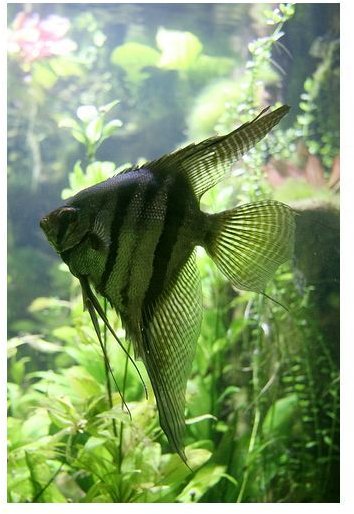Adaptations of an Angelfish to Enviroment and other Conditions
Freshwater and Saltwater Angelfish
In nature there are several groups of fishes that are called Angelfish but the most common are two types, the freshwater or tropical Angelfish that belong to the family of cichlids of the genus Pterophyllum, and the Marine or saltwater angelfish of the family Pomacanthidae.
Saltwater Angelfish are some of the most vividly colored creatures in nature. They are found in all the oceans of the world but are most commonly found in Indo-Pacific oceans near corals and reefs. They make good reef aquarium pets.The saltwater fishes like the
Queen Angelfish look very similar to the butterfly fish; the only difference is the spine found in the lower gill cover of the angelfish.
The freshwater angelfish have angel wing like dorsal and anal fins which give them their positive beauty and name. They come in a variety of colors and are known for their aggressive behavior. All the species of this type of angelfish originated from the Amazon river, the Ornico River and the Essequibo rivers basins in South America.
Both the saltwater and freshwater fishes have over a period of centuries adapted to various aquatic conditions, to help them navigate through water, remain hidden from predators and also survive. Here are some of their important adaptations.
Adaptive Features of Angelfish
Food – The most unusual adaptation of the angelfish that live in saltwater is the food they consume. Almost 90 percent of their food comes from sponges, which are not an ideal choice. It is because sponges have tough exteriors that taste bad with a network of indigestible and irritating spicules which are made up of silica or calcium. The two evolved adaptations that have allowed angelfish to eat sponges not eaten by other reef fishes as their primary food source are,
- Protracted jaws with specialized teeth that have overlapping rows which cut through the tough exteriors.
- A special secretion of thick mucus that coats the sponge, making it easier to eat and protecting their stomach during digestion.
The freshwater angelfish, due to its aggressive food habits, is a non fussy eater and if kept in a tank, eats all kind of frozen, dried or live food. In nature it is known to be an ambush predator, preying on small fish and macroinvertebrates.
Body – The body of the angelfish is very thin and compressed. It is also very agile, allowing it to slip through plants and thickets in order to avoid a fight with any other angelfish or take cover from a predator. The freshwater fish are also very cautious of other members from the cichlid family, and can detect their presence and hide almost immediately to avoid an imminent territorial fight.

Body Color – Freshwater angelfish that are found in the wild are usually silver colored, with two or three black or dark brown stripes. In a dark environment these become very good camouflage from predators. In the ocean the angelfish are more vividly colored. Scientists believe it helps them identify others of their species from a distance.
There are innumerable varieties of angelfish found in fresh and seawater and they all come in a spectrum of colors.
Control of Motion – An angelfish, like many other fish, can stay still in the water for a very long time. In times of danger, when a predator is lurking nearby, this is to their advantage as it becomes difficult to detect their presence.
Mating – Scientists believe that some species of angelfish are a protogynous hermaphrodite, which means that they can change sex from female to male. This is an adaptation that allows them to reproduce when there is no other male in the territory. Angelfish in general are very territorial and establish mates for life. Some species like the Queen angelfish and the Blue angelfish can also crossbreed, producing a hybrid called the Townsend angelfish.
Thus, depending on the circumstances, angelfish have adapted to different environments, food choices and conditions.
Reference
https://www.hucscuba.org/monthly_feature_7.asp
https://sanpedrosun.net/old/01-373.html
Image credit
Cliff1066 and lazslo-photo via cc/Flickr
